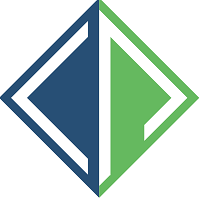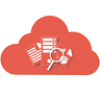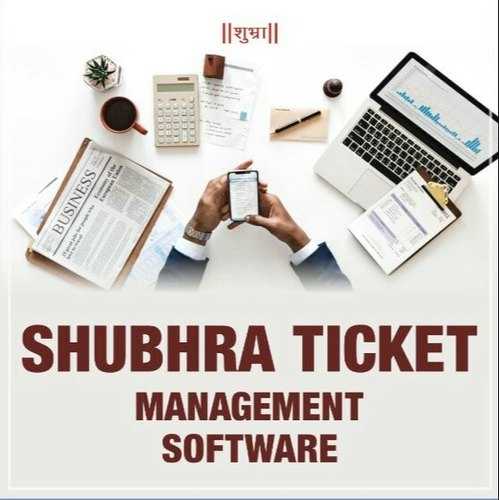Description

CA Office Automation

EasyCloudBooks
Comprehensive Overview: CA Office Automation vs EasyCloudBooks
Here's a comprehensive overview of CA Office Automation, EasyCloudBooks, and OfficeAmp, focusing on their primary functions, target markets, market presence, and key differentiating factors:
CA Office Automation
a) Primary Functions and Target Markets:
- Primary Functions: CA Office Automation is designed to streamline and automate various administrative and management tasks within Chartered Accountant (CA) firms. Its core functions include document management, task assignment, client management, billing, time tracking, and workflow automation.
- Target Markets: The primary target market for CA Office Automation is CA firms, accounting practices, and individual accountants looking to enhance their operational efficiency.
b) Market Share and User Base:
- CA Office Automation is a niche product focused specifically on accounting and CA firms in regions where CA professionals are prevalent, such as India. Its market share is relatively modest compared to more general office automation solutions, as it caters to a specialized audience.
c) Key Differentiating Factors:
- Industry Focus: The software is specifically tailored for the needs of CA firms, offering specialized features that cater to their unique requirements.
- Integration Capabilities: It often integrates with accounting and tax software, which is crucial for CA firms to maintain an efficient workflow.
EasyCloudBooks
a) Primary Functions and Target Markets:
- Primary Functions: EasyCloudBooks is a cloud-based platform designed to manage various aspects of CA, CPA, and accounting firm operations. Key features include client management, task automation, team collaboration, billing, document management, and analytics.
- Target Markets: The main target audience includes accounting firms, CPAs, tax consultants, and financial advisors who need a comprehensive cloud-based solution for managing their practices.
b) Market Share and User Base:
- EasyCloudBooks serves a global market but is particularly popular in regions with a high concentration of accounting professionals, like India and other parts of Asia. Its market share is expanding due to the growing adoption of cloud technologies in accounting.
c) Key Differentiating Factors:
- Cloud-Based Solution: Being a fully cloud-based offering, it ensures data accessibility and collaboration from anywhere, which is particularly appealing to modern accounting practices.
- Scalability and Customization: The platform is scalable and offers customization options, making it suitable for firms of different sizes and with varying needs.
OfficeAmp
a) Primary Functions and Target Markets:
- Primary Functions: OfficeAmp is primarily an internal helpdesk and office management tool that operates primarily through Slack. It allows teams to manage and track office requests, IT tickets, and internal queries seamlessly, facilitating communication and task management in an office setting.
- Target Markets: The target market for OfficeAmp includes businesses and teams that use Slack for communication and require an efficient way to handle office and administrative tasks.
b) Market Share and User Base:
- Given its specialized focus and integration with Slack, OfficeAmp holds a smaller market share compared to more comprehensive office management software. It is primarily used by companies looking to enhance their use of Slack for internal operations.
c) Key Differentiating Factors:
- Slack Integration: The primary differentiator is its seamless integration with Slack, enabling users to manage office tasks directly within their existing communication workflow.
- Focus on Internal Operations: Unlike the other products, which are geared towards the external client-facing processes of accounting firms, OfficeAmp focuses on improving internal business processes.
Comparative Analysis
-
Target Market: CA Office Automation and EasyCloudBooks directly target accounting and CA firms, while OfficeAmp targets broader businesses using Slack for internal communication.
-
Functionality: Both CA Office Automation and EasyCloudBooks offer comprehensive platforms specifically for accounting firms, whereas OfficeAmp provides focused functionality for internal office management.
-
Differentiation: The main differentiators are industry focus and integration capabilities—CA Office Automation and EasyCloudBooks with accounting-specific features and integrations, OfficeAmp with its Slack-centered approach.
-
Market Presence: EasyCloudBooks has a growing presence with a wider user base due to its cloud-based model, while CA Office Automation and OfficeAmp cater more specifically to niche markets.
These differences highlight how each tool serves its intended audience and offers unique advantages based on its design and integration capability.
Contact Info

Year founded :
Not Available
Not Available
Not Available
India
Not Available

Year founded :
Not Available
Not Available
Not Available
Not Available
Not Available
Feature Similarity Breakdown: CA Office Automation, EasyCloudBooks
When comparing CA Office Automation, EasyCloudBooks, and OfficeAmp, it's essential to break down their features and interfaces to understand their commonalities and unique aspects. Here's a comprehensive analysis:
a) Core Features in Common
1. Task Management
- All three platforms provide basic task management features which include creating, assigning, and tracking tasks to ensure efficient team collaboration.
2. Communication Tools
- Each offers communication features, although the depth of these may vary. They generally include messaging and notifications to streamline internal communications.
3. Reporting and Analytics
- All products provide reporting features to help users analyze productivity metrics, though the complexity and types of reports available can differ.
4. User Access Permissions
- They each allow administrators to set user roles and access permissions, which is crucial for maintaining security and confidentiality levels appropriate to different teams.
b) User Interface Comparisons
CA Office Automation
- UI Style: Generally more traditional and business-oriented. Slightly complex with a focus on detailed controls and options suitable for corporate environments.
- User Experience: While it offers comprehensive features, there may be a steeper learning curve for new users due to the extensive options available.
EasyCloudBooks
- UI Style: Simple and intuitive, designed to cater to small to medium-sized businesses with a clear focus on ease of use.
- User Experience: Known for a minimalist design approach that facilitates easier navigation and faster user onboarding.
OfficeAmp
- UI Style: Modern and sleek, often integrated with platforms like Slack, leveraging a conversational UI approach.
- User Experience: Focused on real-time assistance and ease of accessibility, providing a friendly and interactive environment that’s easy to use.
c) Unique Features
CA Office Automation
- Comprehensive Workflow Automation: Known for its extensive workflow automation features tailored for corporate environments that require a high degree of process customization.
- Integration with Enterprise Systems: Offers robust integration capabilities with other enterprise systems, which adds value to larger organizations.
EasyCloudBooks
- Industry-Specific Customization: Offers features tailored towards accounting firms and finance professionals, such as bookkeeping and invoicing tools.
- Client Management: Robust client management features that help users maintain detailed records, project tracking, and billing.
OfficeAmp
- Conversational Help Desk: Integrates seamlessly with team collaboration tools like Slack, providing a help desk solution that enables users to interact using conversational commands.
- Automated Issue Resolution: Uses AI-powered automation to assist in resolving common workplace issues, making it unique among workplace collaboration tools.
In summary, while CA Office Automation, EasyCloudBooks, and OfficeAmp share essential features necessary for productivity and task management, they differ significantly in their interfaces, target user bases, and unique offerings. CA Office Automation is targeted at large enterprises with more complex needs, EasyCloudBooks caters to finance and accounting professionals, and OfficeAmp focuses on providing a seamless user experience within existing collaborative ecosystems like Slack.
Features

Document Management
Billing and Invoicing
Task Management
Client Management
Compliance and Reporting
Financial Reporting
Integration and Support
Task Automation

Project Management
Client Management
Financial Management
Reporting and Analytics
Best Fit Use Cases: CA Office Automation, EasyCloudBooks
To evaluate which software solution is the best fit for a business or project, it's important to consider the specific features and advantages each one offers, as well as how they cater to different industry needs. Here's a breakdown of the best fit use cases for CA Office Automation, EasyCloudBooks, and OfficeAmp:
a) CA Office Automation
Use Cases:
- Professional Service Firms: CA Office Automation is particularly suited for Chartered Accountant (CA) firms, legal practices, and other similar professional service providers that need robust document management and compliance tracking.
- Project Management & Workflow Automation: Ideal for businesses that require detailed project tracking, task assignments, and standardized workflows.
- Client Management: Firms that need to manage complex client information and communication in a centralized system.
Industries & Company Sizes:
- Small to Medium-sized Enterprises (SMEs): Especially those in need of efficient document and client management.
- Professional Services: Accounting and consultancy firms benefit from specialized features aimed at compliance and documentation.
b) EasyCloudBooks
Use Cases:
- Freelancers & Small Firms: EasyCloudBooks is designed for freelancers and small firms, particularly in the accounting field, needing an intuitive platform for managing clients, projects, and billing.
- Accounting & Financial Services: The software excels in scenarios that require managing multiple client accounts and simplifying invoicing and payment processes.
- Client Interaction & CRM: It supports businesses that focus heavily on client interaction and require a simple CRM tool integrated with financial functionalities.
Industries & Company Sizes:
- Accounting Firms & Financial Services: Especially beneficial for small-sized accounting and bookkeeping agencies.
- Sole Practitioners & Start-ups: Individuals or small start-up businesses requiring a comprehensive yet straightforward management tool.
c) OfficeAmp
Use Cases:
- Internal IT & HR Support: OfficeAmp is best suited for companies that need to streamline internal help desk operations, enabling employees to raise tickets for IT issues and HR requests through an easy-to-use platform.
- Team Collaboration & Communication: Organizations focused on enhancing team communication and efficiently tracking tasks and problems across departments.
- Facilities & Office Management: Businesses with significant office management needs and facility maintenance tracking.
Industries & Company Sizes:
- Medium to Large Enterprises: Companies with considerable internal communication needs and larger teams.
- Tech & IT Companies: Organizations where internal support operations can benefit from a structured and efficient ticketing system.
d) Industry Verticals & Company Sizes
Each of these products caters to specific industries and scales of business operation:
-
CA Office Automation: Typically tailored for professional services in sectors that require rigorous document and workflow management. It caters well to small and medium-sized enterprises within these verticals.
-
EasyCloudBooks: Mostly serves the accounting industry, especially targeting small firms and individual practitioners. It suits start-ups and small businesses needing straightforward management systems to handle client and billing.
-
OfficeAmp: Suitable for a wide variety of industries but particularly effective for larger organizations and tech companies with complex internal support needs. Its use case is more focused on internal operations than specific industry tasks.
By understanding these nuances, businesses can select the most appropriate tool aligned with their specific operational needs and industry requirements.
Pricing

Pricing Not Available

Pricing Not Available
Metrics History
Metrics History
Comparing undefined across companies
Conclusion & Final Verdict: CA Office Automation vs EasyCloudBooks
To provide a comprehensive conclusion and final verdict on CA Office Automation, EasyCloudBooks, and OfficeAmp, it's essential to analyze their features, usability, pricing, and targeted user base. Here is an assessment based on available data:
Conclusion and Final Verdict
a) Best Overall Value:
- EasyCloudBooks appears to offer the best overall value for users, especially those in the accounting and CA industry. With its targeted features, cost-effectiveness, and integration capabilities, it provides a comprehensive solution tailored to the specific needs of accountants and financial professionals.
b) Pros and Cons of Each Product:
CA Office Automation:
- Pros:
- Tailored features for accounting and tax professionals.
- Strong integration with CA-specific workflows like tax filing and document management.
- Provides automation tools that reduce manual effort and enhance productivity.
- Cons:
- Can be overwhelming for organizations not primarily focused on accounting.
- May have a steeper learning curve due to specialized features.
- Pricing might be higher compared to more general office management tools.
EasyCloudBooks:
- Pros:
- Intuitive interface with user-friendly features designed for accountants.
- Affordable pricing plans, offering good value for small to medium practices.
- Cloud-based, allowing accessibility from anywhere, enhancing collaborative work.
- Cons:
- Limited scalability for larger firms with more complex needs.
- May lack advanced project management features compared to broader office automation tools.
OfficeAmp:
- Pros:
- Excellent for task management and internal communication within teams.
- Integrates seamlessly with chat platforms like Slack, optimizing team collaboration.
- User-friendly and easy to deploy within organizations of various sizes.
- Cons:
- Primarily designed for managing tasks and requests, not specifically tailored for CAs or accountants.
- May require additional tools to cover comprehensive accounting or CA-specific needs.
- Limited direct integrations with accounting software.
c) Specific Recommendations:
-
For Users Focused on Accounting or CA-Based Practices: EasyCloudBooks is the most suitable choice due to its specific features designed for financial professionals. It simplifies accounting processes and enhances collaboration at an affordable cost.
-
For General Office Management with a Focus on Automation: CA Office Automation can serve firms where accounting is a significant function but not the sole focus. However, be prepared to invest time in learning the system to leverage its full potential.
-
For Team Communication and Task Management Needs: OfficeAmp is ideal for organizations looking to streamline their internal communication and task management. However, users should anticipate integrating additional tools to meet comprehensive accounting needs.
Ultimately, the decision should be guided by the specific needs and priorities of the organization, with attention given to scalability, budget, and feature requirements.
Add to compare


